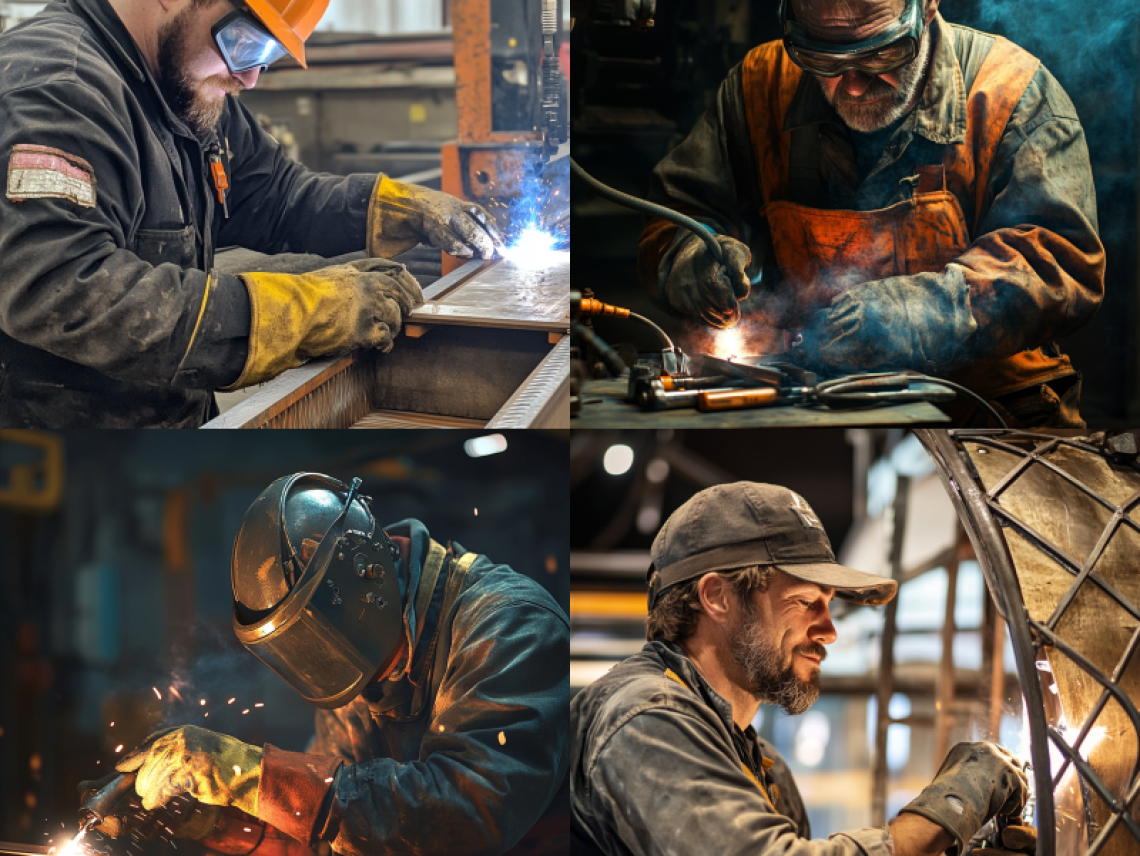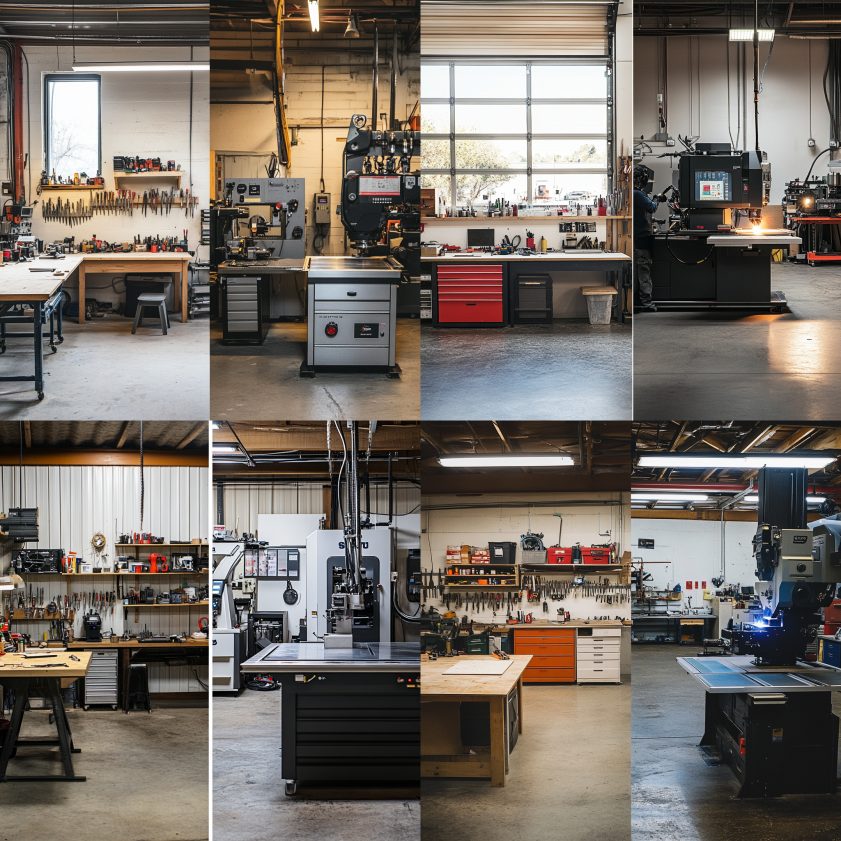What Is the Difference Between Making and Fabrication?

Table of Contents
ToggleUnderstanding the Basics of Making
When we talk about “making,” we refer to the process of creating or building something from scratch, often with a hands-on or artisanal approach. In everyday terms, making can involve assembling furniture at home, handcrafting jewelry, or building a prototype in a garage. It implies a more personal, direct interaction with the materials.
In industrial settings, making still refers to creating something, but it’s typically low-scale and often experimental. Engineers and designers may “make” test models or rough drafts of components to evaluate functionality and design.
Making is commonly associated with the maker movement, where DIY enthusiasts build and innovate using accessible tools and materials. For example, a 3D printer or a CNC router used by a maker in a home workshop qualifies as a “making” process.
Key features of making include:
- Low-volume production
- Manual processes
- High degree of customization
- Trial-and-error approach
- Flexible tooling and design
What Is Fabrication in Manufacturing?
Fabrication, by contrast, is a more formalized and structured process. It refers to the construction of metal structures and products by cutting, bending, and assembling components. In industrial manufacturing, fabrication is a critical phase used to produce everything from pressure vessels and piping systems to skid packages and heavy equipment.
At Red River, our fabrication services are tailored for high-performance industries like oil and gas, power generation, and chemical processing. Fabrication involves multiple disciplines and highly trained professionals to meet safety, durability, and compliance standards.
Common fabrication techniques include:
- Welding
- Machining
- Plasma cutting
- Shearing
- Punching
- Assembling
Unlike making, fabrication typically requires specialized equipment, rigorous documentation, and certification standards. It’s geared for volume, consistency, and operational efficiency.
Fabrication is the backbone of industrial manufacturing, ensuring the creation of robust, reliable, and regulatory-compliant products.
Key Differences Between Making and Fabrication

Scale and Production Volume
Making generally happens on a small scale. A single individual or a small team may create one-off pieces, prototypes, or samples. Fabrication, however, caters to large-scale production that involves mass replication with uniformity.
Tools and Techniques Used
Makers rely on general-purpose tools like hand drills, hot glue guns, or desktop CNCs. Fabricators work with industrial-grade machinery, including TIG welders, hydraulic presses, and automated CNC machines.
Labor Intensity vs Automation
Making is labor-intensive and often manually executed. It thrives on human ingenuity and craftsmanship. Fabrication incorporates automation and advanced machinery to increase precision and throughput.
Output Consistency and Standards
One of the hallmark traits of fabrication is repeatability. Products must meet exacting tolerances and undergo quality control checks. Making allows for variance and is more forgiving of imperfections.
Aspect | Making | Fabrication |
Scale | Small, individual | Large, industrial |
Tools | Hand tools, DIY kits | CNCs, welders, presses |
Skillset | Hobbyist to generalist | Certified professionals |
Volume | Low | High |
Consistency | Variable | Standardized |
When to Choose Fabrication Over Making
If your project demands precision, durability, and repeatability, fabrication is the ideal route. For instance, pressure vessels used in chemical processing must meet ASME codes and undergo rigorous testing—a task well beyond the scope of casual making.
In contrast, making is ideal for rapid prototyping, testing new ideas, or creating highly customized products that don’t require industrial validation. For startups or inventors, making helps bring concepts to life before moving to a fabricator for scaling.
Industries like aerospace, defense, and oil and gas cannot afford failure or inconsistency. Their components must adhere to strict codes, which only fabrication processes can fulfill reliably. Red River ensures that each fabricated product meets or exceeds these standards.
Wrapping It Up: The Clear Divide Between Making and Fabrication
The difference between making and fabrication isn’t just academic; it’s practical. While both involve creating tangible products, the scale, tools, techniques, and outcomes are vastly different.
Making is hands-on, flexible, and great for small runs or prototypes. Fabrication is industrial, standardized, and built for performance and safety. Choosing the right method depends on your project’s scope, complexity, and intended use.
Need a reliable partner?
Frequently Asked Questions (FAQ)
1. Is fabrication the same as manufacturing?
Not exactly. Fabrication is a subset of manufacturing that focuses on constructing parts or assemblies from raw materials through processes like cutting and welding.
2. What are common fabrication methods?
Some widely used fabrication techniques include laser cutting, arc welding, grinding, forming, and assembling.
3. Can making and fabrication be used together?
Yes. Early product development may start with making (e.g., creating a prototype) and transition into fabrication for mass production.
4. Which industries rely heavily on fabrication?
Industries such as oil and gas, aerospace, defense, construction, and energy production all depend heavily on precision fabrication.
5. Is fabrication more expensive than making?
Fabrication may involve higher initial costs, but its efficiency, consistency, and compliance with standards often lead to lower costs per unit in the long run.
6. What skills are needed for fabrication?
Professionals in fabrication typically have expertise in blueprint reading, welding, safety protocols, and machine operation.
7. Can you fabricate without welding?
Yes. While welding is a core method, other options include bolting, riveting, and adhesive bonding, depending on the material and application.
8 . What materials are typically fabricated?
Metals such as steel, aluminum, and titanium are common, but plastics, composites, and even some ceramics are also fabricated for specific purposes.
Key Takeaways
- The difference between making and fabrication centers on scale, precision, and application.
- Making is ideal for prototypes, customization, and innovation on a small scale.
- Fabrication suits industrial use where consistency, safety, and regulations are non-negotiable.
- Red River offers trusted fabrication services for demanding industries.
- Knowing when to use each process ensures project efficiency and long-term success.
Table of Contents
ToggleRelated Blog Post
- What type of work is fabrication?
- What is fabrication vs machining?
- What is an example of fabrication?
- What is the process of fabrication?
- Is fabrication the same as welding?
- What are the steps of metal fabrication?
- What are the different types of fabrication?
- What is the difference between making and fabrication?
Solutions
In the realm of industrial solutions, Red River emerges as a pioneer, offering a diverse range of custom-engineered products and facilities. Among our specialties is the design and production of Custom/OEM Pressure Vessels, meticulously crafted to meet individual client requirements, ensuring performance under various pressure conditions. Our expertise extends to the domain of prefabrication, where Red River leads with distinction.
The company excels in creating prefabricated facilities, modules, and packages, reinforcing its stance as a forerunner in innovation and quality. This proficiency is further mirrored in their Modular Skids offering, where they provide an array of Modular Fabricated Skid Packages and Packaged equipment. Each piece is tailored to client specifications, underlining their commitment to delivering precision and excellence in every project they undertake.
